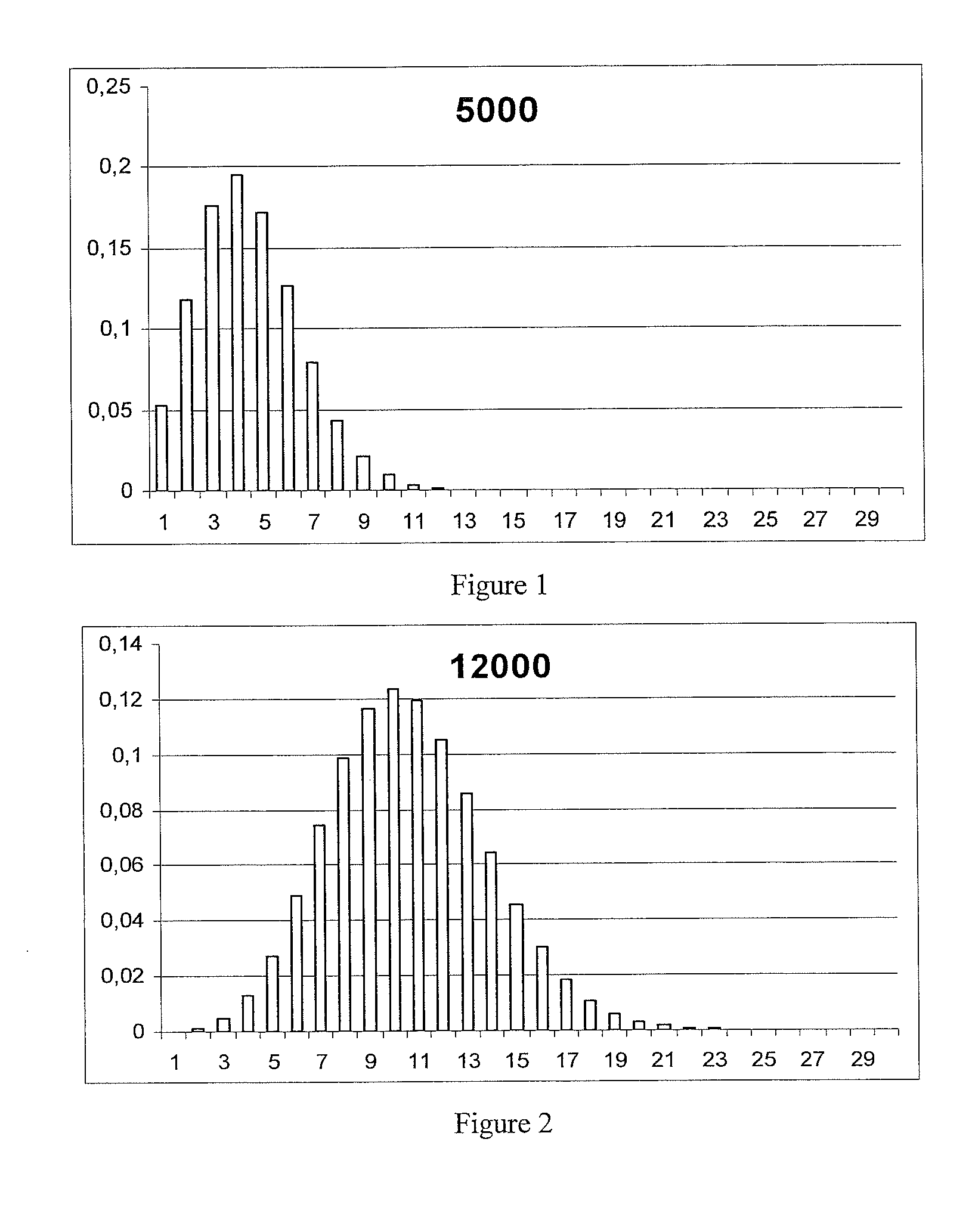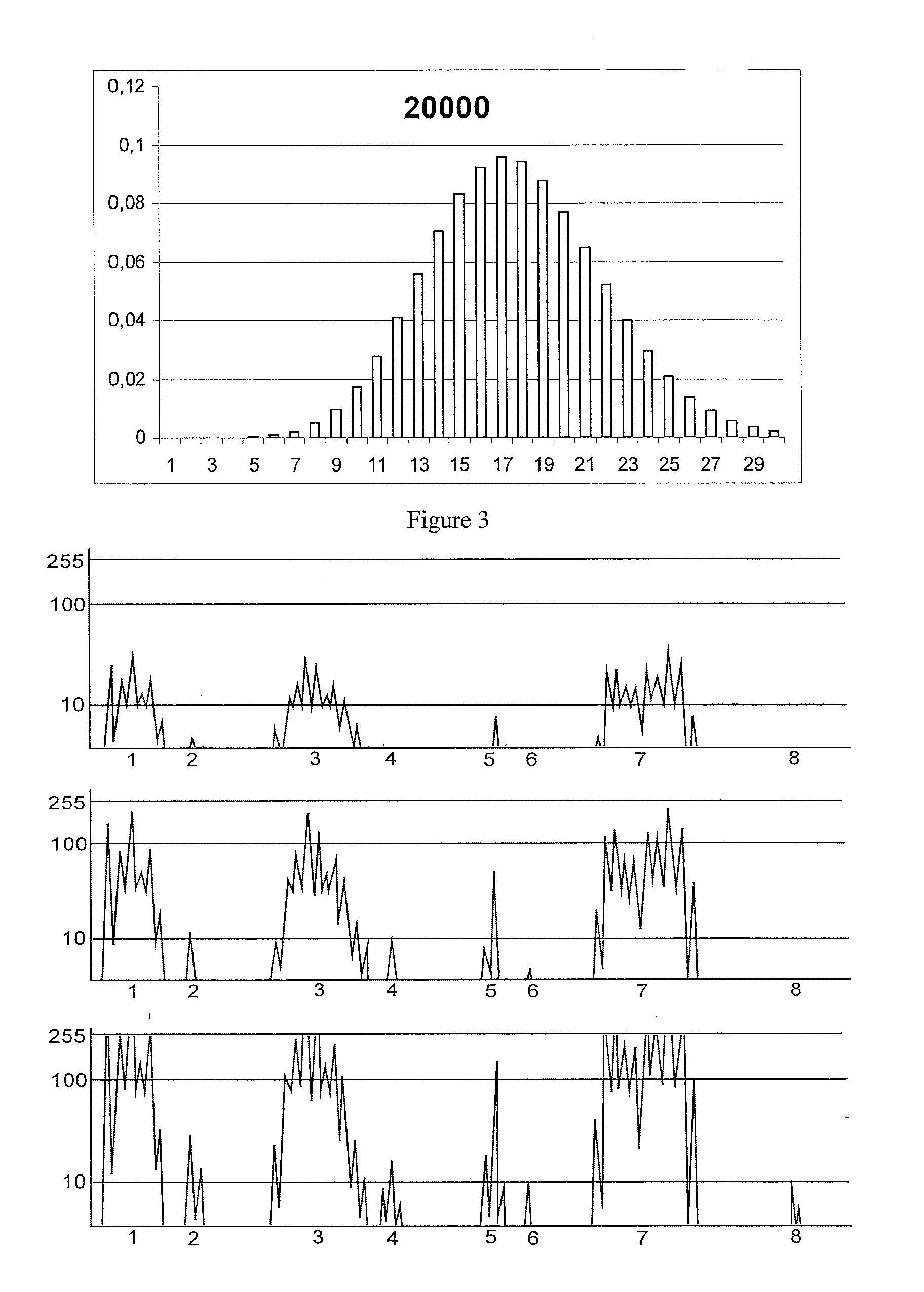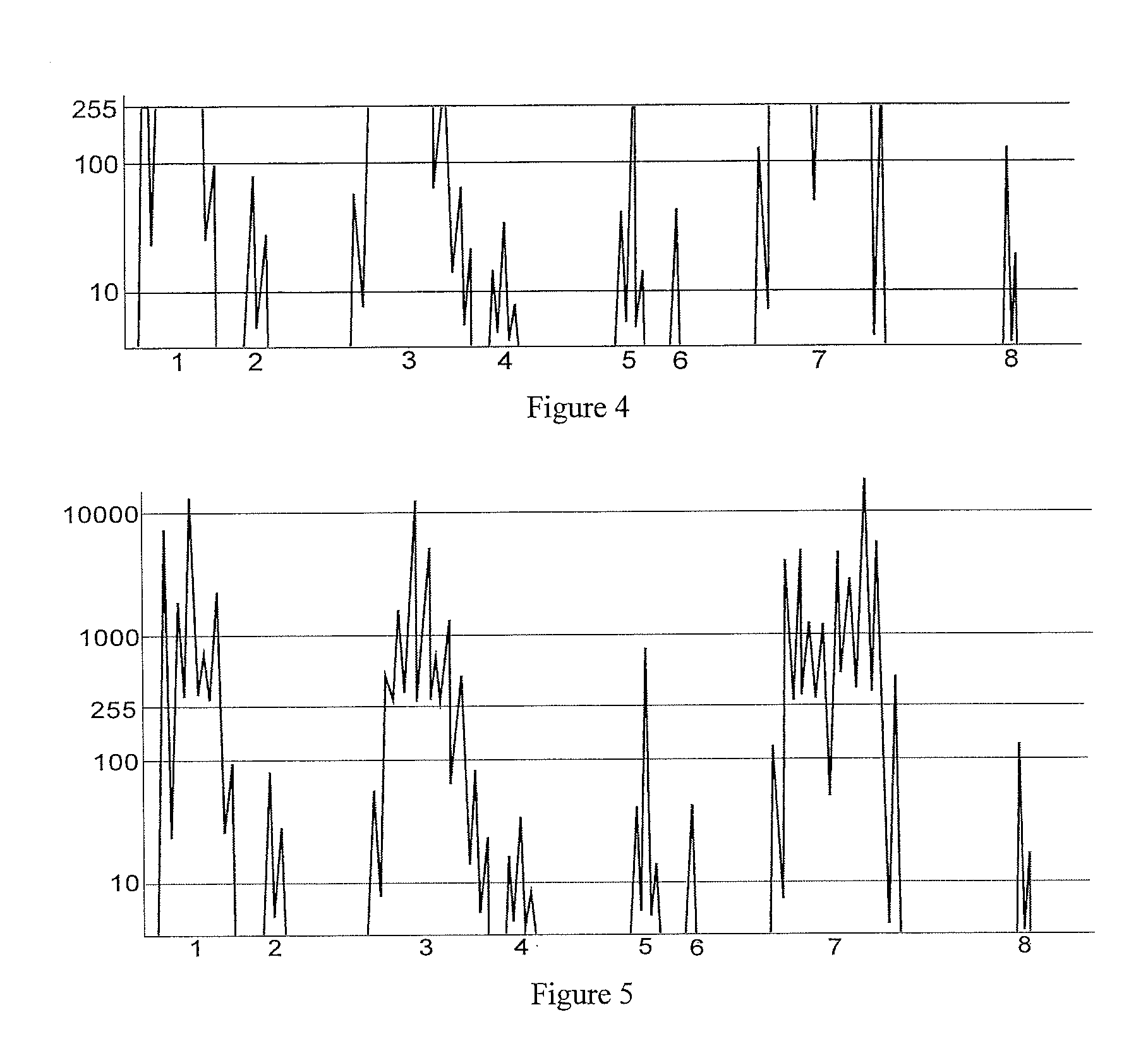Acquisition technique for maldi time-of-flight mass spectra
a mass spectra and acquisition technique technology, applied in mass spectrometers, separation processes, dispersed particle separation, etc., can solve the problems of no longer resolving isotopic signals of different nominal masses, large empty mass ranges, and high scattering of -of-flight mass spectrometers, etc., to achieve the best concentration accuracy, increase the energy density, and attenuate the effect of the detector sufficiently
- Summary
- Abstract
- Description
- Claims
- Application Information
AI Technical Summary
Benefits of technology
Problems solved by technology
Method used
Image
Examples
second embodiment
[0040]the invention similarly increases the energy density in individual steps, but here the ion beam is attenuated in equal steps by defocusing to such a degree that none of the ion signals enter saturation. The optimum degree of defocusing must be determined by a calibration process for each case. The ion beam in a time-of-flight mass spectrometer can be defocused somewhere on the flight path of the ions by an ion lens. The ion beam of a time-of-flight mass spectrometer is usually aimed at the detector in such a way that the detector is more or less fully illuminated. Defocusing therefore reduces the ion density at the detector, as required. This method does not provide simultaneous improvement of the dynamic measuring range. As with standard methods, the dynamic measuring range must be increased for the mass spectra of each energy density by hundreds or thousands of individual spectra, although it is not usually necessary for the mass spectra to achieve the same dynamic measuring...
PUM
 Login to View More
Login to View More Abstract
Description
Claims
Application Information
 Login to View More
Login to View More - R&D
- Intellectual Property
- Life Sciences
- Materials
- Tech Scout
- Unparalleled Data Quality
- Higher Quality Content
- 60% Fewer Hallucinations
Browse by: Latest US Patents, China's latest patents, Technical Efficacy Thesaurus, Application Domain, Technology Topic, Popular Technical Reports.
© 2025 PatSnap. All rights reserved.Legal|Privacy policy|Modern Slavery Act Transparency Statement|Sitemap|About US| Contact US: help@patsnap.com



